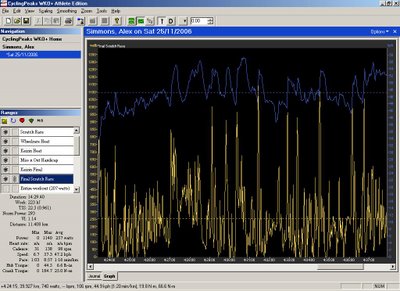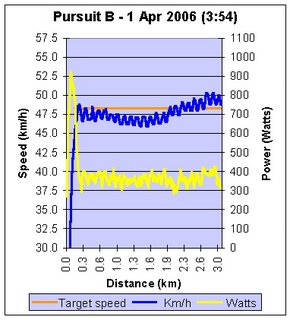Gearing up for the final push.....
Paul Craft's unique and well lubricated commentary kept us amused all afternoon and well into Saturday evening during the Central Coast Track Open at the outdoor 460 metre Adcock Park track located at West Gosford. Hosting 55 track cycling events covering a Junior and Senior racing carnival is no mean feat for any sporting club club, so thanks to all the organisers and helpers for making the day's racing fun. The carnival started in windy conditions which eased as the evening settled.
The junior carnival is pretty popular and for a local town track carnival, this is pretty typical of what you'll see in towns across the country. Grass roots racing certainly keeps the sport healthy. For myself, it was my first open racing in the new club colours. Given the top B-grade handicap mark (110 metres), I had six races for the evening:
- 5km Scratch race (3rd)
- Keirin Heat (2nd)
- 1.8km Wheelrace heat (missed qualifying for final);
- A/B/C grade Handicap Miss'n'Out (3rd);
- Keirin Final (4th)
- 12km A/B Combined Scratch Race (no placing, retired gracefully with 1/2 lap to go along with former junior world and Australian elite champion Shaun Hopkins)
Scratch races and Keirins are pretty well known but two races that may not be as well understood are the Wheelrace and Handicap Miss'n'Out. Click the link to get a little more info if interested. The Miss'n'Out is explained at the bottom of this post.
Some race day stats:
CTL:___________ 89.1
TSB:_________ + 25
TSS:__________ 137.6
Max Speed:_____ 60 km/h
Max Power:___ 1391 watts
Gear:_______ 48x14 (92.6")
Clearly I was plenty rested for the event with a large positive TSB. Coach had backed off training a little after a few signs were emerging that I needed a bit of a breather.
I was pleased at being competitive in the Keirin as it's a sprint event and not my target type of race (my focus is on enduro racing). My best result was the 3rd place in the Miss'n'Out, eventually outlasting all 40 riders bar Peter Fitzpatrick (2006 Australian Elite Madison Championship bronze medallist) and top U-23 enduro rider Phil Stokes. Indeed these guys are in final prep for the State elite track championship in a couple of weeks and their form ain't exactly shabby.
The final scratch race was pretty hard with the top enduro boys cranking it up several times in an effort to drop the sprinters. Here's a screen shot of the closing scratch race power file for interest. Click on the image to see a larger, clearer version (right click to view in a new window) .
 The two dotted horizontal lines mark the average speed (blue) and power (yellow). Stats are shown on the left. Ignore the cadence numbers, they are wrong (I don't use the cadence sensor on the track bike and should turn off the hub cadence function).
The two dotted horizontal lines mark the average speed (blue) and power (yellow). Stats are shown on the left. Ignore the cadence numbers, they are wrong (I don't use the cadence sensor on the track bike and should turn off the hub cadence function).Note the repeated increases in speed and the power required to respond to the accelerations. This is pretty typical of enduro riders trying to rid the bunch of the sprinters by picking up the pace and then the spirnters and/or less fit attempting to slow it down again. It can be pretty ruthless. You know the tactic is working when world champion riders get spat out eventually.
Anyway - a pretty good night's racing and my form was, according to a fellow competitor (a World's Masters track champion himself) who wasn't racing as his two boys were busy cleaning up in the junior carnival, "better than I've ever seen". Nice compliment.
"Form = Fitness plus Freshness" ~ A. Coggan.
"Form = Compliments from Competitors" ~ A. Simmons.
Miss'N'Out (courtesy of FNWTR):

















